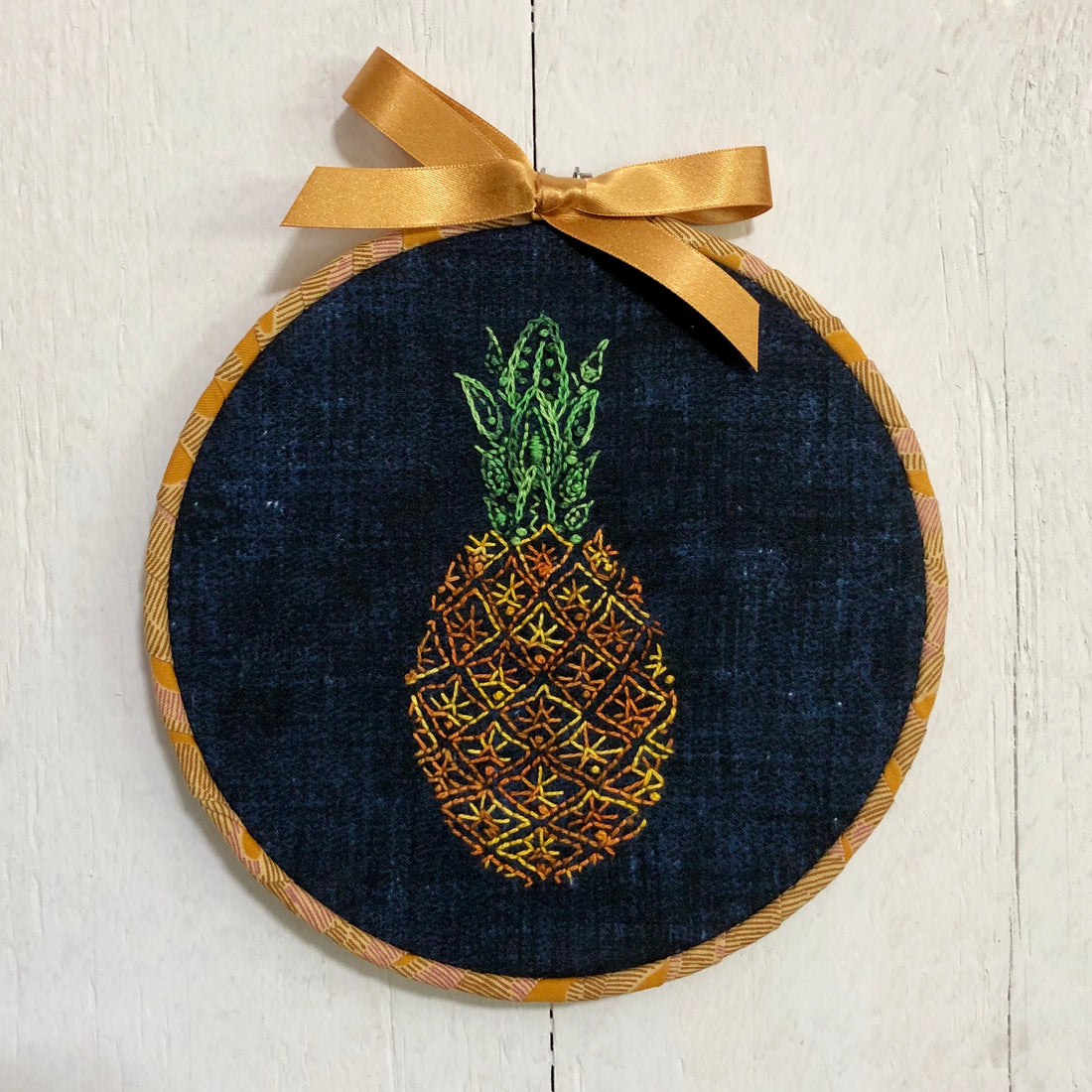
How to Set up an Embroidery Hoop for Successful Stitching
Share

Do you struggle to keep your fabric taut in the hoop? Are your stitches uneven?
In this tutorial, you will learn how to bind and properly set up your hoop for the best stitching results.
Why should you bind your hoop?
There are three reasons why you should bind your hoop. First and foremost, the binding provides the correct tension by keeping the fabric from slipping so it remains taut for longer. Second, a bound hoop helps keep stitches even and well formed. And third, the binding provides extra protection to your project from the rings of the hoop.
Materials you will need:
- Embroidery hoop
- 1 inch single-fold bias tape* approximately six times in length the diameter of your embroidery hoop. Example: 7-inch embroidery hoop would require 42 inches of bias tape
- Embroidery fabric (at least 2 inches bigger than design)
- Needle and thread or fabric glue such as Roxanne's Glue Baste.
* You can also cut a 2-inch bias strip of fabric and fold in half but it will look more rustic when you finish a hoop if you choose to use this method.

Step 1: Secure Binding Tape to Hoop
Starting next to the hardware on the hoop on either the left or right side, place binding at a 45-degree angle along the edge of the ring. Wrap strip around once making sure to overlap the starting point. Stitch a few stitches (or use fabric glue) to secure the end.

Step 2: Wrap hoop
Continue wrapping the bias tape around the hoop, overlapping as you go. Be sure to wrap quite tightly. If you run out of tape toward the end, you may need to go back and re-wrap so that the tape does not overlap so closely.
Step 3: Secure End
Once you arrive to the hardware on the other side of the hoop, trim away excess fabric. Tuck the end under and stitch another few stitches to secure the end.
You may also choose to bind the inner ring.

BUT DON'T STOP HERE!
Now that your hoop is bound, you need to properly place your fabric in the hoop to ensure your stitches are even and well formed.
Step 4: Position Fabric
With the inner ring on a work surface, place fabric over top of the ring. Center the fabric as best you can with the center on the part of the design that you will be working on. For this project, I am using Paraffle's Paisley Pineapple pattern.

Step 5: Secure Hoop onto Fabric
Slightly loosen screw on outer ring to allow it to be easily placed over top of the inner ring.
Pro-tip: If left handed, place outer hoop with screw pointing to 2:00 (10:00 for right handers). This ensures that your thread won't catch the screw when stitching your design.

Push down outer ring and run your fingers all the way around gently pushing down as you go. Tighten screw slightly, but not all the way.

Step 6: Optimize Fabric Tension
Gently tug on fabric in all corners so it is gradually tightening/stretching and is well placed in the hoop.
Turn the hoop over with front of hoop/fabric facing down on the work surface and continue to gently tug on the fabric while running fingers all around on inner hoop.

When happy with the positioning, tighten screws as much as possible with your fingers.
Going around hoop, pull at fabric again gently and evenly so as not to warp the fabric.
If your hoop hardware is slotted, use a screwdriver for one final tighten.
Step 7: Final Test
The final step to prepare your embroidery hoop is the drum test. Flick the fabric in your hoop and if it sounds like a drum beat, then you are ready to stitch! No excuses for uneven stitches now :)
You can also leave the binding on making it a more decorative finish.
What other tips and tricks do you have for your sewing projects? Tell us in the comments below.
Looking for ways to finish your hoop project? Check out our Decorative Hoop Tutorial.

